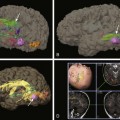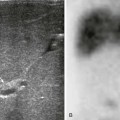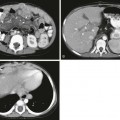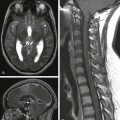Chapter 68 Myocardial perfusion SPECT is useful for identification of fixed or stress-induced myocardial perfusion abnormalities in patients with a history of Kawasaki disease, transposition of the great arteries after an arterial switch operation, cardiac transplants, cardiomyopathy, chest pain, chest trauma, an anomalous left coronary artery from the right sinus of Valsalva, an anomalous right coronary artery from the left sinus of Valsalva, and a left coronary artery from the pulmonary artery. Other less frequent indications include hyperlipidemia, supravalvular aortic stenosis, syncope, coarctation of the aorta, and pulmonary atresia with an intact ventricular septum. In children with Kawasaki disease and coronary aneurysms (which has surpassed acute rheumatic fever as the leading cause of acquired heart disease in children in the United States), cardiac stress testing for reversible ischemia is indicated to assess the existence and functional consequences of coronary artery abnormalities (Figs. 68-1 and 68-2). It has been shown that myocardial perfusion SPECT is a safe and sensitive diagnostic method for identifying coronary stenosis in these children. Figure 68-1 Single photon emission tomography images of a patient with Kawasaki disease. Figure 68-2 Single photon emission tomography images of a patient with Kawasaki disease.
Nuclear Cardiology
Myocardial Perfusion
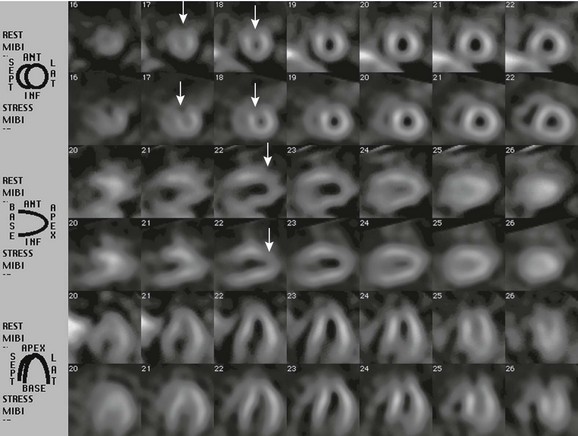
An exercise stress test with technetium-99m MIBI was ordered for a 20-year-old man with a history of Kawasaki disease who had giant coronary artery aneurysms. Single photon emission tomography images were acquired after injection of the tracer material at rest, and the procedure was repeated during a period of stress on the same day. A small fixed perfusion defect on rest, along with stress images involving the distal anterior wall of the left ventricle and the apex (arrows), most likely represent an area of prior infarction. No evidence was found of additional stress-induced ischemia. Ant, Anterior; Inf, inferior; Lat, lateral; MIBI, hexakis-2-methoxyisobutylisonitrile; Sept, septal.
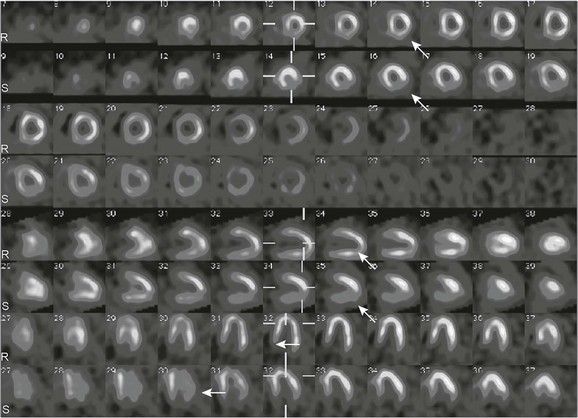
A 4-year-old boy with a history of Kawasaki disease underwent exercise stress testing with technetium-99m MIBI. Short-axis images, as well as vertical and horizontal long-axis stress images (S rows of images), show a perfusion defect (arrows) in the inferolateral wall that is reversible on rest images (R rows of images), consistent with stress-induced ischemia. MIBI, hexakis-2-methoxyisobutylisonitrile.
![]()
Stay updated, free articles. Join our Telegram channel

Full access? Get Clinical Tree


Radiology Key
Fastest Radiology Insight Engine


